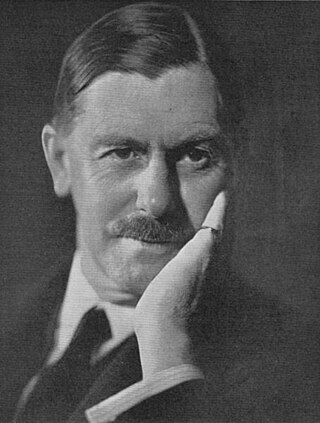Related Research Articles

The prime minister of Rhodesia was the head of government of Rhodesia. Rhodesia, which had become a self-governing colony of the United Kingdom in 1923, unilaterally declared independence on 11 November 1965, and was thereafter an unrecognized state until 1979. In December 1979, the country came under temporary British control, and in April 1980 the country gained recognized independence as Zimbabwe.

Sir Roland "Roy" Welensky was a Northern Rhodesian politician and the second and last Prime Minister of the Federation of Rhodesia and Nyasaland.

The United Federal Party (UFP) was a political party in the Federation of Rhodesia and Nyasaland.

General elections were held in Southern Rhodesia on 14 December 1962. Voters elected 65 members of the Legislative Assembly. The election was notable for bringing to power the Rhodesian Front, initially under Winston Field, which set the colony on the course for its eventual Unilateral Declaration of Independence.

The Rhodesia Labour Party was a political party which existed in Southern Rhodesia from 1923 until the 1950s. Originally formed on the model of the British Labour Party from trade unions and being especially dominated by railway workers, it formed the main opposition party from 1934 to 1946. The party suffered a catastrophic split during the Second World War and lost all its seats, and a further split over the attitude to the Federation of Rhodesia and Nyasaland ended its involvement in Rhodesian politics.
The Federation of Rhodesia and Nyasaland general election of 15 December 1953 was the first election to the legislative assembly of the Federation of Rhodesia and Nyasaland, which had been formed a few months before. The election saw a landslide victory for the Federal Party under Godfrey Huggins, who had been Prime Minister of Southern Rhodesia for the past 20 years.

The prime minister of the Federation of Rhodesia and Nyasaland served as the country's head of government. The federation was formed on 1 August 1953 from the former colonies of Southern Rhodesia, Northern Rhodesia and Nyasaland, and was formally dissolved on 31 December 1963.

The Federation of Rhodesia and Nyasaland, also known as the Central African Federation or CAF, was a colonial federation that consisted of three southern African territories: the self-governing British colony of Southern Rhodesia and the British protectorates of Northern Rhodesia and Nyasaland. It existed between 1953 and 1963.
The Responsible Government Association (RGA), called the Rhodesia Party from 1923, was a political party in Southern Rhodesia. Founded in 1917, it initially advocated responsible government for Southern Rhodesia within the British Empire, as opposed to incorporation into the Union of South Africa. When responsible government was achieved in 1923, the party became the governing Rhodesia Party. It endured until 1934, when it merged with the right wing of the Reform Party to create the United Party, which remained in power for 28 years afterwards, and was itself defunct by 1965.

General elections were held in Northern Rhodesia on 20 March 1959, although voting did not take place in two constituencies until 9 April. The United Federal Party (UFP) was expected to win the elections, and did so by taking 13 of the 22 elected seats on the Legislative Council.

The modern political history of Zimbabwe starts with the arrival of white people to what was dubbed Southern Rhodesia in the 1890s. The country was initially run by an administrator appointed by the British South Africa Company. The prime ministerial role was first created in October 1923, when the country achieved responsible government, with Sir Charles Coghlan as its first Premier. The third Premier, George Mitchell, renamed the post Prime Minister in 1933.

General elections were held for the first time in Nyasaland on 15 March 1956.

Godfrey Martin Huggins, 1st Viscount Malvern, was a Rhodesian politician and physician. He served as the fourth Prime Minister of Southern Rhodesia from 1933 to 1953 and remained in office as the first Prime Minister of the Federation of Rhodesia and Nyasaland until October 1956, becoming the longest serving prime minister in British Commonwealth history.
Federal elections were held in the Federation of Rhodesia and Nyasaland on 12 November 1958. The result was a victory for the ruling United Federal Party, with Roy Welensky remaining Prime Minister.

The Monckton Commission, officially the Advisory Commission for the Review of the Constitution of the Federation of Rhodesia and Nyasaland, was set up by the British government under the chairmanship of Walter Monckton, 1st Viscount Monckton of Brenchley, in 1960. Its purpose was to investigate and make proposals for the future of the Federation of Rhodesia and Nyasaland, made up of Southern Rhodesia, Northern Rhodesia and Nyasaland—respectively equivalent to today's Zimbabwe, Zambia and Malawi.

The Central Africa Party was a multi-racial political party in the Federation of Rhodesia and Nyasaland. The party organised separately in the three constituent part of the federation, Northern Rhodesia, Nyasaland and Southern Rhodesia.
The Confederate Party was a political party in the Federation of Rhodesia and Nyasaland.
The Dominion Party was a political party in the Federation of Rhodesia and Nyasaland, led by Winston Field.
The Federal Party was a party in the Federation of Rhodesia and Nyasaland.
Michael Hill Blackwood CBE was a lawyer and politician who spent most of his working life in colonial Nyasaland and in Malawi in the early years of its independence. Although he represented the interests of European settlers before independence and opposed both the transfer of power to the African majority and the break-up of the Federation of Rhodesia and Nyasaland, he remained in the country as a member of its legislature after Malawi’s independence and until his retirement on 1983.
References
- ↑ The Federation of Rhodesia and Nyasaland Hansard
- ↑ Kenneth Janda (1980) Political Parties: A Cross-National Survey New York: The Free Press, pp281–282
- 1 2 James P Hubbard (2010) The United States and the End of British Colonial Rule in Africa, 1941-1968, McFarland, p333